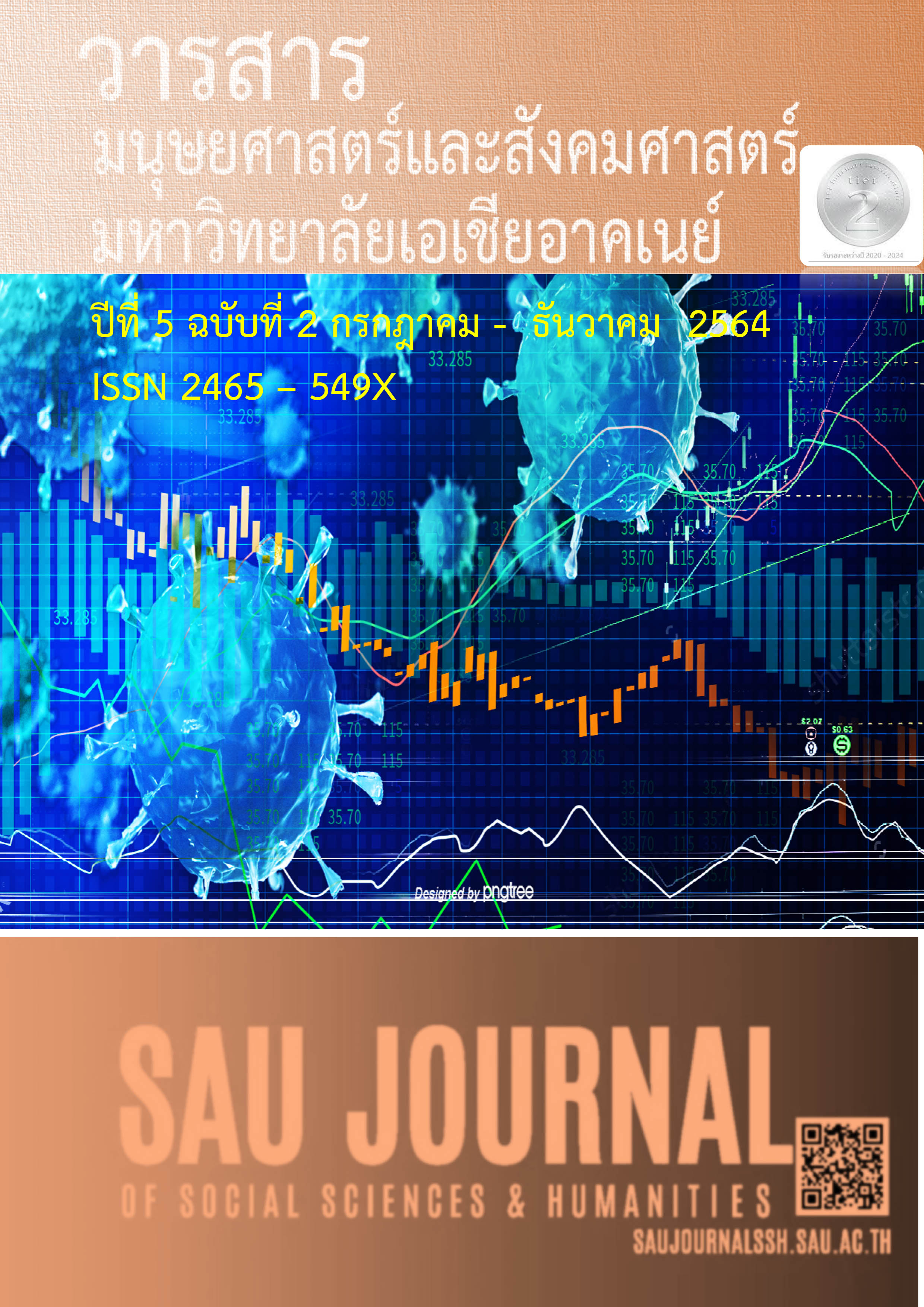ทฤษฎีโครงสร้างทางความคิดและทฤษฎีการป้อนข้อมูลที่สามารถเข้าใจภาษาได้ของสตีเฟนคราเชนเพื่อการอ่านและการสอนภาษา
คำสำคัญ:
Schema Activation, Comprehensible Input, LanguageInstructionบทคัดย่อ
The study looks at the processes of schema activation and the application of Krashen’s Comprehensible Input Hypothesis (ci+1) in online class. The study relies primarily on schema theory to find out how essential reading aspects integration would help Thai university students immerse themselves in learning new vocabulary. More than eighty Business English major students with different levels of English proficiency were assessed using the benchmarks for evaluating the effects of utilization of reading and language instruction during the second semester of 2020 academic year. The learners’ reactions and results of their performance based on the application of essential reading abilities in reading instruction, including the transition from one activity to another opened an opportunity to consider the application of this strategy in the university for EFL teachers. The article is summarized by providing recommendations to reinforce the utilization of schema activations and utilization of CI+1 as necessary tool for improving reading comprehension of learners to match with Common European Framework of Reference (CEFR) commercial learning materials.
เอกสารอ้างอิง
Elshafee, A. (2016). A Survey on Ubiquitous Computing: Towards Empowering Wireless Network Technologies. Retrieved from https://www.semanticscholar.org/paper/A-Survey-on-Ubiquitous-Computing%3A-Towards-Wireless-Elshafee/3dcb43fcb5c9be766a289a357c5d74dcd4f97d4d/figure/0
Guerra, J.A. (2003). Seventh-Grade Students’ Competence in Reading Expository Texts. Reading, Writing, Thinking. 13th European Conference in Reading, 117. Estonia
Harvey, S., & Goudvis, A. (2000). Strategies that Work: Teaching Comprehension to Enhance Understanding. York. ME:Stenhouse
Krashen, S. (1982). Principles and Practices of Second Language Acquisition. Los Angeles Pergamon Press.
Krashen, S. (1985). The Input Hypothesis: Issues and Implications. Essex: Longman.
Pabres, B. C., Assavatesamongkol, N., & Hemara, R. (2021). Revisiting Krashen’s Comprehensible Input and its Influence on Teaching Thai University Students. 8th Southeast Asia University National Interdisciplinary Conference Proceedings (SAUNIC2021). Bangkok, Thailand
Pabres, B. C. (2015). Foreign Language Learner’s Acquisition of L2s Online, and Acquisition of French and English Languages through Formal Instruction. 3rd Southeast Asia University National Interdisciplinary Conference
Proceedings (SAUNIC2016). Bangkok, Thailand
Peterson, D. & VanDerWege, C. (2002). Guiding Children to be Strategic Readers. Phi Delta Kappan 83(6), 437 – 439
Reoperez, M.G. (2016). Rubrics for Assessing Reading and Language Instruction. Personal Collection of M.G.
Reoperez, University of the Philippines Open University. Philippines
Rosenblatt, L. (1978). The Reader, the Text, the Poem. Carbondale, IL: Southern Illinois University Press
Sandiford, H., McCarthy, M., & McCarten, J. (2014). Celebrations: Celebrations around the World. Touchstone2 Student’s Book. Cambridge University Press. Singapore
Schütz, R. (2019, October 12). Stephen Krashen’s Theory of Second Language Acquisition.
Retrieved English made in Brazil: http://www.sk.com.br/sk-krash.html
Spor, M.W., & Schneider, B.K. (2003). Strategic Reading: Helping Children Understand Text. Reading, Writing, Thinking. 13th European Conference in Reading, 102 – 105. Estonia
Vacca, R.T. & Vacca, J.L. (1996). Bringing Learners the Text Together. Content Area Reading 96, 105






